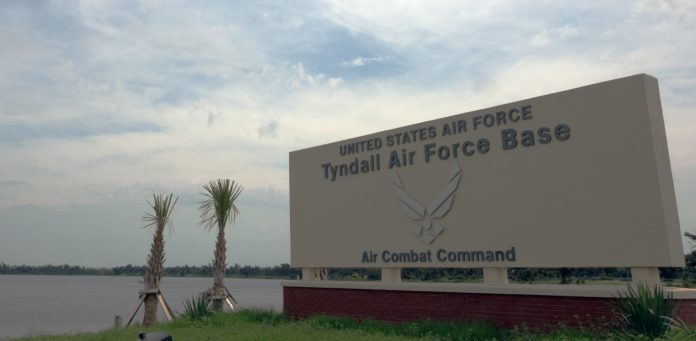Gulf Power begins construction on microgrid project at Tyndall AFB

Gulf Power has started construction on a solar microgrid pilot project at Tyndall Air Force Base in Panama City, Fla.
The project supports the U.S. Air Force’s plan to rebuild Tyndall as a more resilient “Installation of the Future.” It could serve as a prototype for future Department of Defense installations.
In 2018, Tyndall Air Force Base sustained a direct hit from Hurricane Michael – a Category 5 hurricane that caused $4.7 billion in damage and destroyed nearly 500 buildings. In 2020, the USAF announced plans to rebuild it with updated building codes, “smart building” technology, and features that will make the base more storm resilient.
“As Tyndall rebuilds, Gulf Power and FPL are combining resiliency and renewables to the effort as a way to ensure mission readiness,” Mike Spoor, vice president of Gulf Power, which is part of Florida Power & Light, said. “This pilot project is a win-win for the regional economy, the Air Force, and our customers. Supporting Tyndall’s viability is critical to thousands of military and civilian jobs. And, the Air Force, Gulf Power, and FPL will be working together to learn from this first-of-its-kind project and test a variety of use cases, which could help us build a smarter, stronger grid for customers – especially during storms.”
The microgrid will include a 150-kilowatt (kW) solar array and 450 kW, 2.5-hour battery. Further, it will have a 10-year lifespan and support three buildings on base. The project is expected to be completed at the end of 2022.
Gulf Power has a long history of providing solutions for military bases. In 2015, the company partnered with the U.S. Air Force, the U.S. Navy, and a third-party developer to install solar arrays at Naval Air Station Pensacola Saufley Field, Naval Air Station Whiting Field, and Eglin Air Force Base.
Tyndall is the home to the F-22 Raptor simulator training program and the only Air Battle Manager School in the U.S. Air Force. It also serves as headquarters to the First Air Force, which is responsible for air defense and air sovereignty of the contiguous United States, U.S. Virgin Islands, and Puerto Rico.
“The Air Force has a tradition of operating on the leading edge of innovation, and at Tyndall Air Force Base, microgrid technology has emerged as a promising way to create a resilient and sustainable ‘Installation of the Future,” Col. Travis Leighton, Natural Disaster Recovery Program division chief, said.
Microgrids can operate in both grid-connected and “island” mode – meaning when severe weather affects the main energy grid, a microgrid can operate autonomously using its own local energy sources to power the buildings or facilities that it supports.
